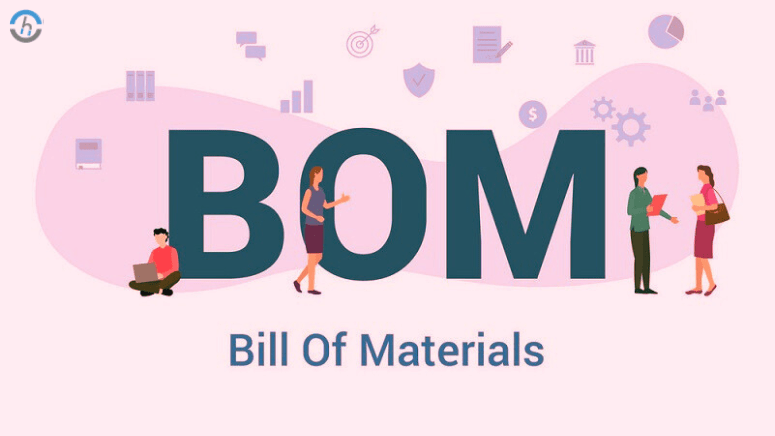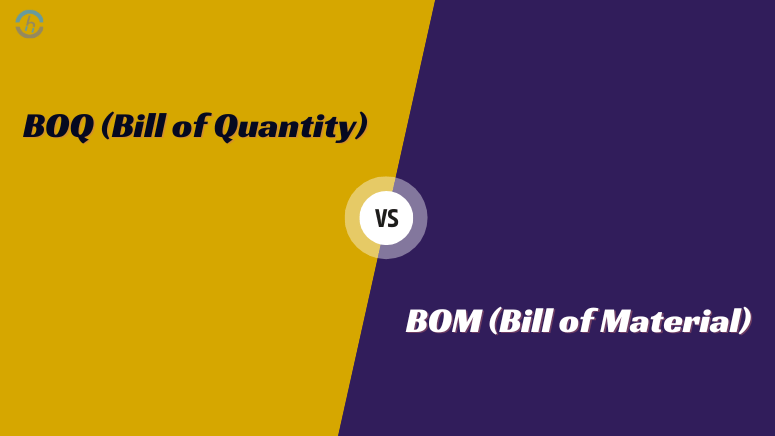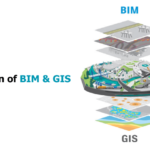The construction of buildings is a complicated dance of architecture, engineering, and flawless execution, with details as the binding thread. At the core of this detail lies documentation: the stack that handles instructions and data for any setup.
The main constituents of these packs are the Bill of Quantity (BOQ) and the Bill of Material (BOM). While they are often used interchangeably, it is crucial to identify their distinctions when planning any construction task.
This article will help you understand the differences between them, as well as the ways how you can use them in your project for its success.
In the world of construction, precision is pivotal. Every nail, every beam, and every element must fit seamlessly into the larger blueprint, both literal and figurative. This is where both the BOQ and the BOM become critical. They are precise road maps that ensure that every project detail is planned, budgeted, and executed to perfection.
What is BOM (Bill of Material)?

The BoM (Bill of Material) is a very detailed list of the components, parts, units, assemblies, and products essential to the creation of a product itself. It acts as a crucial reference tool, which developers, among others, consult to know if they are in line with every aspect of a given design specification.
Usually related to production, BoM must communicate the exact amount of items in various shapes and complexity needed for a particular stage, by which you can achieve effective logistics planning or efficient management of inventories.
BoM is a multi-level document that provides build data for multiple sub-assemblies (products within products) and includes for each item the part number, AML, mechanical properties, and a battery of component description. In addition to the above, it can incorporate documents such as part specifications, CAD or BIM files, and schematics as attachments.
What is BOQ (Bill of Quantity)?
The (BoQ) complete form Bill of Quantity (BoQ) is one of the essential items and refers to an outline that specifies the quantities of materials, parts, and labour necessary for construction projects.
It provides transparency through the statement of expenses allocated to a square unit, which serves as an anchor point of a campaign. This manual assists firms in writing good bids, preparing budgets and controlling costs in the construction process.
Bills of Quantities (BoQ) is the systematic mode of the construction process. Its main aim is to enumerate work items for tendering and ensure equity among all the parties involved in contracting.
Differences Between BOQ and BOM
It’s important to note that while the functions of the BoQ and BOM differ, so do the methodologies behind their curation.
Format and Structure Variations
The BoQ often is organized according to trade, in which separate button-ups for materials, labour, and other bids are provided. The specifications are formatted to provide compelling reading for cost estimators and contractors.
Consequently, the BOM will be laid out hierarchically, with different categories outlining the various parts and sub-parts that lead to the final assembly.
Usage in Different Stages of a Project
The BoQ is mainly used in the pretender stage. It is usually during the Tendering process. However, the BOM is also beneficial in the procurement period of a project. It is used from the initial design to the procurement process, as well as during production and quality management.
Level of Detail and Granularity
The BoQ is usually more specific about labour and expenses linked with particular project stages. At the same time, the BOM’s primary purpose is the materials and their price, not about other labour and costs. It is only by means of this precise granularity that cost estimation is reached and project viability and profitability ascertained.
Process of Creating BOQ and BOM
Building Information Modeling (BIM) has transformed several operational processes in the AEC industry. From planning to designing, scheduling, managing, and more, BIM has brought unprecedented efficiencies to the segment.
The 3D-model-based process makes it easier for designers, architects, contractors, and other stakeholders to eliminate wastage and accurately plan the entire lifecycle of a project.
When we think of project planning, two things instantly strike our mind: BOQ and BOM. Bill of Materials (BOM) and Bill of Quantities (BOQ) are two essential parts of the planning process. In this blog, we’ll see how BIM has improved the BOQ and BOM creation process.
The process behind the BOQ and BOM is that it calls for the involvement of relevant stakeholders and the utilization of specific tools and skills whose main aim is the correct outcome.
Steps Involved in Preparing a Bill of Quantity
- Understanding Project Scope: The first and foremost step toward furnishing your BoQ is to understand the scope of the project and the specifications thoroughly. This covers a detailed review of the architectural and engineering documentation and, if needed, regulatory provisions.
- Itemizing Resources: Then we prioritize and categorize the resources into parts like workforce, materials, equipment, etc., further sub-categorizing them in terms of amounts needed.
- Estimating Costs: Finally, the quantity is being calculated, and the unit cost is assigned to the item. This cost calculation is then multiplied to derive the total project cost.
- Refining and Reviewing: The BoQ may be revised several times to ensure that it is clear and complete and, thus, ready for signing.
Steps Involved in Creating a Bill of Material
- Design Specifications: The BoM process begins with precise design specifications. This includes knowing exactly what the end product should look like and what it must do.
- Identifying Parts: Each part and its variants are selected and specified in detail. This includes everything from size and material to applicable standards and regulations.
- BOM Software: Modern BoM creation is supported by specialized software that can handle complex product structures and revisions.
- Versioning and Control: BoMs are subjected to version control to ensure that all stakeholders are working with the most current information.
BOQ & BOM: Importance in Construction Projects
The BoQ and the BOM are the foundations of the construction document flow. Because a lot of factors in the industry are really complicated, they are essential to manage all these complexities.
How BOQ and BOM Streamline Project Management
As the construction BoQs are exact, the cost estimates are more precise, which then supports decision-making at every stage of the project process. CBMs then guarantee that materials will be in the right location and used at the right time, which will ramp up production and supply chain efficiencies.
Impact on Cost Estimation and Project Budgeting
An accurate and well-developed BoQ is a necessary condition of successful cost estimating as well as for creating bids and budgeting in general. It serves as a vehicle for pre-bid meetings and bid assessment and evaluation of contractors. The BOM also, like before, provides a basis for material cost negotiation and expense control throughout the project.
Conclusion
At Chudasama Outsourcing is dedicated to leveraging cutting-edge technologies such as BIM and software like Revit to craft precise, detailed, and dynamic BOQs and BOMs. By employing advanced tools, we remove uncertainty from the planning phase, setting projects up for success before construction even begins. If you seek insights into how BIM enhances construction efficiency, reach out to our knowledgeable team today.





